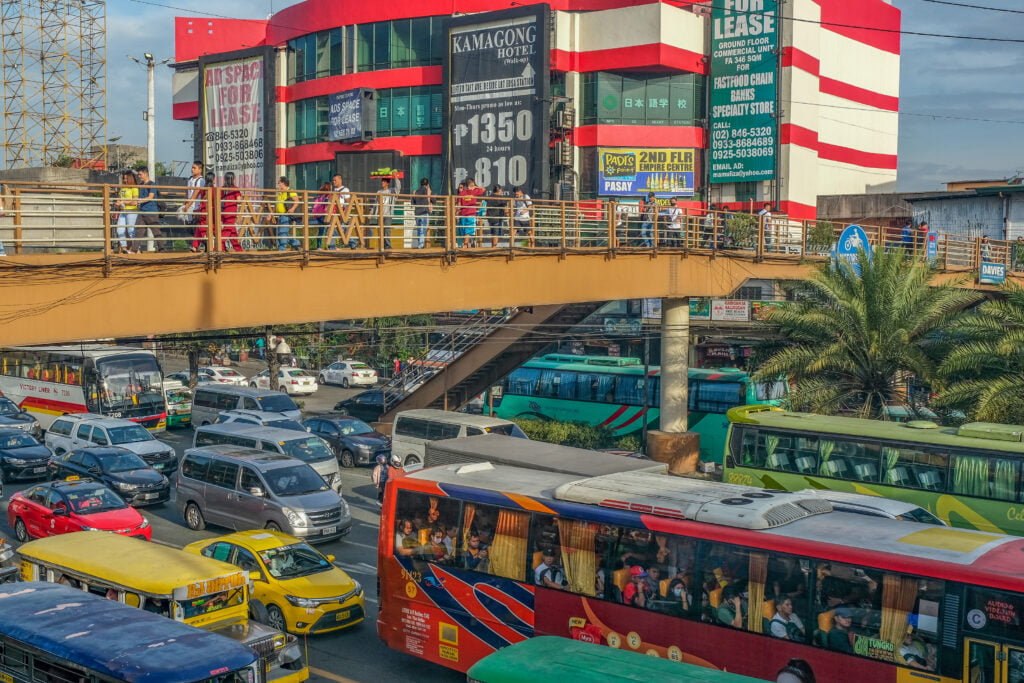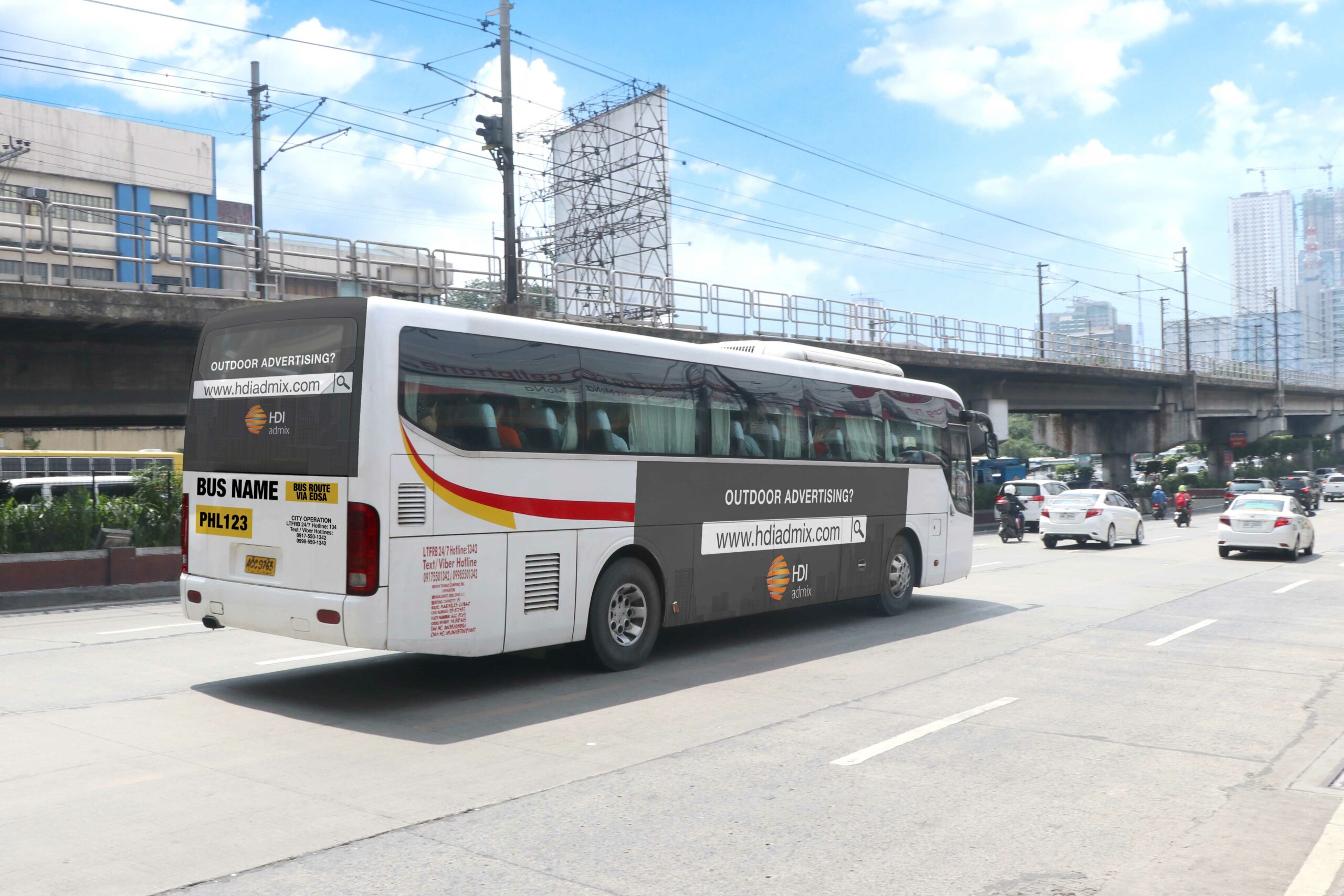Reliable Transit Advertising Philippines to Expand Your Target market
Reliable Transit Advertising Philippines to Expand Your Target market
Blog Article
How Transportation Marketing Can Change Public Transportation Spaces Into Dynamic Advertising And Marketing Platforms
Transportation advertising and marketing holds considerable possibility to redefine public transportation areas into dynamic advertising and marketing platforms that involve and educate. By making use of innovative layouts such as interactive kiosks and digital screens, brand names can not only reach a diverse target market yet also improve the general traveler experience. This approach creates a special possibility for brand names to connect with consumers in a setting that is usually neglected. As we check out the diverse advantages and advancing strategies of transit advertising, it increases the inquiry of just how this makeover can redefine our communications with both brand names and the urban environment.
Advantages of Transportation Advertising

Additionally, transportation advertising is very economical contrasted to standard media. It allows marketers to achieve high perceptions at lower prices, making best use of return on financial investment. The restricted audience of travelers offers a possibility for brands to communicate their messages to people that are commonly responsive during their traveling times.
Moreover, the vibrant nature of transit advertising and marketing allows projects to be upgraded frequently, making sure that messaging remains appropriate and prompt. This flexibility can be important in reacting to market trends or marketing occasions, maintaining the brand name top-of-mind for consumers. Finally, the prevalent visibility of transportation advertising adds to brand name recall; repeated exposure within familiar travel contexts enhances brand name awareness and fosters consumer loyalty, eventually driving sales and boosting brand track record.
Kinds Of Transportation Advertising And Marketing
Public transport systems provide various styles for advertising and marketing, each satisfying various marketing techniques and audience engagement techniques. One popular type is outside bus and train wraps, which cover the entire automobile and develop a mobile signboard impact, permitting high exposure in metropolitan atmospheres. These wraps can catch interest as they traverse busy streets, reaching a varied target market.
Another preferred layout is interior advertising, that includes posters, digital screens, and advertisements on transportation seats. These positionings engage passengers throughout their journey, reinforcing brand name messaging in a constrained space. Digital presents, specifically, use the advantage of vibrant web content, enabling marketers to upgrade messages in real-time.
Station advertising is also substantial, including posters, banners, and interactive kiosks within transportation stations. These advertisements take advantage of foot traffic and can target certain demographics based on area.
Last but not least, advertising partnerships with transportation authorities can result in one-of-a-kind campaigns, such as themed transportation experiences or events, boosting the general involvement with commuters. Each kind of transit marketing offers distinctive benefits, permitting brands to tailor their strategy to efficiently reach their target market within the general public transport community.
Engaging Commuters Effectively
Commuters are increasingly flooded with advertising messages throughout their day-to-day journeys, making it important for brand names to involve them in ingenious methods. To record focus in this crowded area, marketers must prioritize imagination and importance. Utilizing captivating visuals and concise messaging can substantially improve the probability of engagement.
Interactive aspects, such as QR codes or increased fact features, can also transform fixed ads right into immersive experiences, fostering a deeper connection with the audience. Brands ought to concentrate on resolving travelers' demands and interests, tailoring messages to resonate with their lifestyle, whether with promotions for regional companies or services developed to improve their travelling experience.
In addition, timing plays a crucial role; strategically placing ads throughout optimal travelling hours can make the most of visibility and impact. Involving travelers properly additionally entails leveraging social networks combination, enabling passengers to share their experiences or promotions straight from transit platforms, therefore intensifying brand name reach.
In essence, effective engagement pivots on comprehending the commuter journey and developing engaging, interactive, and relevant advertising experiences that not only record interest but likewise drive activity and commitment. By doing so, brand names can transform public transport right into a vibrant marketing platform that resonates with its audience.

Measuring Marketing Impact
How can brand names precisely my latest blog post analyze the efficiency of their marketing campaign en route settings? Determining the influence of transit advertising needs a multifaceted strategy that incorporates qualitative and quantitative metrics. One prevalent technique is tracking engagement with mobile analytics, where brand names can examine foot traffic patterns site link and application communications previously, throughout, and after campaigns.
Surveys can give important understandings into brand recall and customer sentiment, enabling brand names to evaluate just how well their messages resonate with travelers. Furthermore, monitoring social networks involvement related to certain projects can reveal shifts in public assumption and brand name conversation.

Moreover, teaming up with transit agencies can boost measurement precision, as they frequently have comprehensive demographic data on ridership trends. By incorporating these methodologies, brands can develop an extensive understanding of their marketing efficiency, making certain that their campaigns not only get to however likewise affect their target market successfully.
Future Patterns in Transit Advertising
A significant shift is expected in transportation marketing as technological advancements and changing consumer behaviors improve the landscape. Transit Advertising Philippines. The assimilation of electronic screens and interactive media is anticipated to enhance interaction, enabling brands to deliver vibrant material that resonates with diverse audiences. As public transport systems accept wise innovation, advertisers will utilize real-time data analytics to customize messages based on guest demographics and habits
In addition, increased truth (AR) is positioned to change the method commuters connect with advertisements. By giving immersive experiences, AR can transform an ordinary trip into an interesting narrative that records attention and fosters brand name commitment. This advancement will likely encourage marketers to create even more experiential campaigns that drive customer interaction.
Sustainability is an additional vital trend influencing transit advertising and marketing. As ecological consciousness expands, brand names will progressively look for to line up with environmentally friendly techniques, utilizing lasting products and advertising environment-friendly initiatives within their projects.
Verdict
In final thought, transportation advertising provides significant advantages by improving brand exposure and involving a restricted audience. Through numerous styles, such as exterior wraps and electronic displays, it transforms mass transit right into a vibrant marketing system. Reliable engagement methods and robust dimension techniques even more intensify its influence. As trends develop, the capacity use this link for cutting-edge communications between brand names and travelers is poised to expand, making sure that transportation advertising and marketing stays a crucial part of modern-day marketing strategies.
Transportation advertising and marketing holds substantial possibility to redefine public transport spaces right into vivid advertising platforms that involve and inform. The prevalent existence of transportation advertising and marketing adds to brand recall; repeated direct exposure within acquainted travel contexts reinforces brand name awareness and fosters consumer commitment, eventually boosting and driving sales brand name credibility.
Just how can brand names accurately examine the performance of their advertising projects in transportation environments?In verdict, transit advertising uses substantial benefits by boosting brand visibility and engaging a captive target market. Transit Advertising Philippines. As patterns evolve, the capacity for cutting-edge communications between travelers and brands is poised to expand, ensuring that transportation advertising stays a vital element of modern advertising methods
Report this page